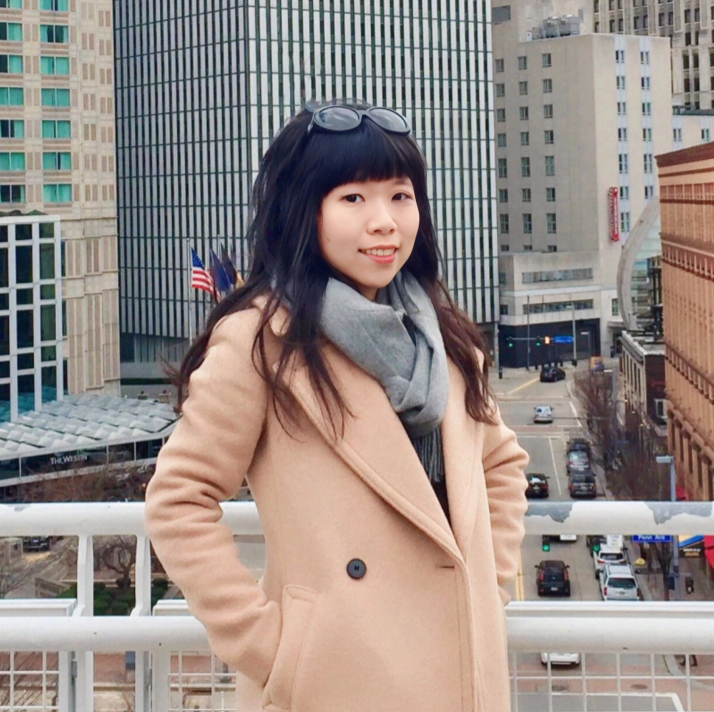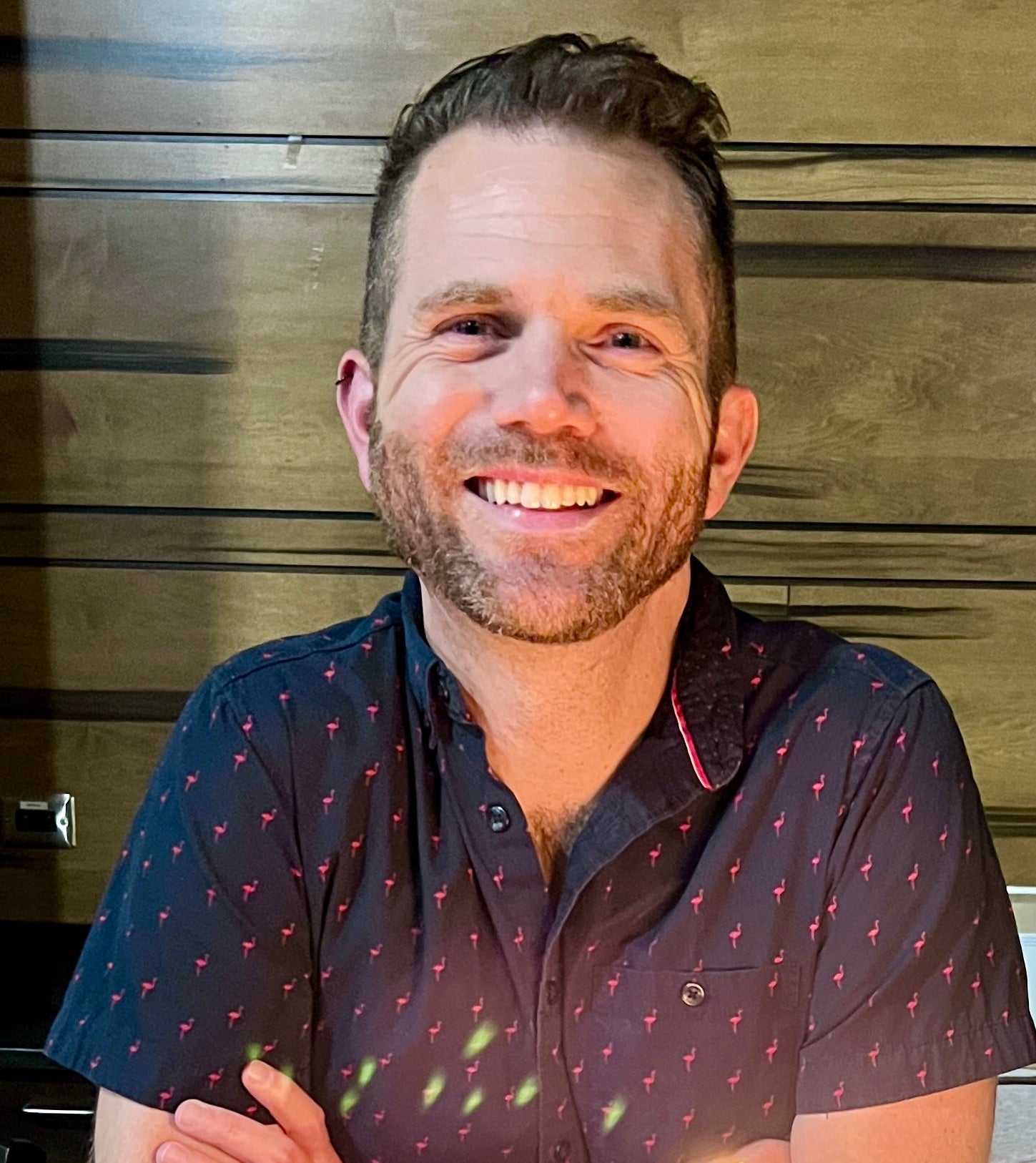Four English faculty members won University awards this past academic year, including Marylou Gramm, Michael Meyer, Jialei Jiang, and Sam Pittman.
Teaching Professor Marylou Gramm won the Tina and David Bellet Award for Teaching Excellence, which “recognizes outstanding and innovative teaching.” The award, established in 1998 by David  and Tina Bellet, celebrated its 25th anniversary with the Dietrich School of Arts and Sciences this year.
and Tina Bellet, celebrated its 25th anniversary with the Dietrich School of Arts and Sciences this year.
“It really affirms and recognizes the efforts I’ve made over the years to center students in my classrooms as sources of knowledge and as drivers of our explorations of literature and writing, but it also inspires me to continue to try and be the teacher I want to be,” Gramm said.
To build relationships with her students, Gramm said she likes to have conversations with them through feedback on their work and often invites her students to come chat with her.
“I always want to work with my students beyond the class. I’ve had students do all kinds of projects that grew out of our class. In my History and Politics of the English Language class, students have gone on to do archival research,” she said.
One of Gramm’s most notable efforts at the University of Pittsburgh was the implementation of an Asian American literature class, after her students came to her to comment on the lack of one at Pitt. After years of research and reading, Gramm gathered the materials to implement the class and helped students in the class with further research.
“I’ve been the mentor for those who receive grants from the Humanities Center at Pitt. One of them right now is in South Korea researching a writer from our Asian American Literature class and teaching in a middle school,” Gramm said.
Over the years, she remarked, she sees herself as a co-learner with her students.
“I am someone engaged with students in a quest to figure things out, to explore things, to really dwell on forming questions and figuring out why questions matter. Rather than to be scrambling so quickly after answers that close them down, I want to open it up,” she said.
Professor Michael Meyer, who won the Provost’s Faculty Advisor and Mentor Award, follows a similar approach to Gramm's, using the classroom as a starting point for his students' work.
“I’m very much aware, based on my own experiences as a student, that your friendships, your internships, your work, your concerts, your friends—that’s all just as educational as what you’re doing in class,” Meyer said. 
After students work on in-class projects, Meyer will often pull them outside to see if it can be made into something “bigger and better” than just the grade they received. In one example, he took students to the Carnegie Museum of Art for a writing assignment, where one chose to focus on the work of film and conceptual artist Theresa Hak Kyung Cha; this interest ended up turning into a Bachelor of Philosophy thesis, and later, a Fulbright award.
“I’m always urging students to take the work seriously that they're doing right now. A lot of great creative work is done between 18 and 22. The music you like in your early twenties is probably the music you’re going to like when you’re in your early fifties, and the subjects that draw and attract you are worth seeing if other people have done them before, because you might be onto something great,” Meyer said.
As Meyer primarily works with undergraduate students, he said that the most fulfilling part is that students come in with their glasses half full. He said this philosophy came from when, as a Peace Corps volunteer in China, he once took a hike to a Buddhist temple, where a monk asked him his purpose and Meyer explained his aspirations.
“He [the monk] said, ‘You know what your problem is? As I’m listening to you talk, you have all these things you want to achieve, and you’re holding them in your hand close to you. You can also hold everything you desire in your hand away from you with your palm exposed, and that lets other people see you need help,’” Meyer recalled. “That’s one great thing about working at Pitt as a teacher: When I go to people with my palm outstretched and my desires seen, people jump up to help.”
Jialei Jiang, a teaching associate professor in Composition, won a Provost’s Award for Diversity in the Curriculum for her course, Innovative Approaches to Design Justice. In the course, students work to make inclusive podcasts, promotional videos, and advocacy posts on social media. “I believe what made my course stand out was intentional integration of the design justice principles into both the curriculum and pedagogy. Rather than focusing solely on technical skills, I encourage students to think critically about the impacts of their designs, who they serve, how they serve the community, and how digital media can both reinforce and challenge systems of marginalization,” Jiang said. 
In a partnership with ButterQueen, a local minority-owned cosmetics and beauty products business, students were able to create advocacy-focused videos in a real-life context.
“It also allowed my students to reflect on their social responsibilities as digital creators,” Jiang said. “I saw my students grow as digital media creators, but also as more socially conscious communicators, and this kind of transformation is what I strive for in my teaching.”
Also recognized with a Provost’s Award for Diversity in the Curriculum was Teaching Associate Professor Samuel Pittman. Pittman attributed this recognition to his role in the creation of the Disability Studies certificate program, which he directs. He also teaches Introduction to Disability Studies through the program, which is based in the College of General Studies.
“One of the big things for me is that disability as a part of diversity wasn’t programmatically represented in the University. There were some courses and people doing work on disability through a humanistic lens, but not something that was a program,” Pittman said. “Having the certificate and being able to have recognition for creating those things means that there’s more visibility for the certificate. It’s kind of circling back—it’s not about me; it’s about the students and giving disability more representation across campus.”

To develop the certificate programs, Pittman said he looked at existing interdisciplinary programs, especially at courses that already touched on disability.
“What I’m looking for when I bring a course to the certificate is to make sure they’re approaching disability through a humanistic, historical, social, and cultural lens, not thinking about how to fix or treat disability,” Pittman said.
His efforts have paid off, as the number of students working on the disability certificate has risen significantly in the past few years.
“I can’t even keep track of the students who are declaring because it keeps increasing,” Pittman said.
For those looking to create a similar certificate at different schools, Pittman said collaboration is key.
“Being able to support people who are working on like-minded things, to reach across campus, is one of the biggest things because it’s so collaborative. It’s very woven together,” Pittman said.
—Emma Hannan
Emma Hannan is a rising senior Theatre Arts and Political Science double major. She was The Fifth Floor communications intern this past spring semester.
